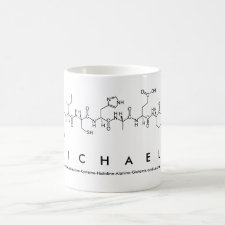
Authors: Appell M, Kendra DF, Kim EK, Maragos CM
Article Title: Synthesis and evaluation of molecularly imprinted polymers as sorbents of moniliformin.
Publication date: 2007
Journal: Food Additives and Contaminants
Volume: 24
Issue: (1)
Page numbers: 43-52.
DOI: 10.1080/02652030600887586
Alternative URL: https://www.researchgate.net/publication/6636053_Synthesis_and_evaluation_of_molecularly_imprinted_polymers_as_sorbents_of_moniliformin
Abstract: Moniliformin is a low molecular weight mycotoxin that has worldwide potential to contaminate cereal grains. Although several traditional methods have been developed to detect moniliformin, the lack of anti-moniliformin antibodies has created a need for materials that recognize moniliformin at the molecular level through a binding mechanism. To address this issue, the authors synthesized molecularly imprinted polymers that bind moniliformin. Imprinted and non-imprinted polymers were evaluated by equilibrium binding assays and moniliformin concentrations were measured by LC analysis using ultraviolet light detection. Successful polymers were imprinted with toxin analogues as the templates; non-imprinted polymers exhibited minimal binding in acetonitrile under the assay conditions. Selected imprinted polymers also bound moniliformin in ethanol, methanol and dimethyl formamide. Significant differences in moniliformin binding by the polymers were dependent on polymer composition, and these differences were highly dependent on the template used to imprint the polymer. Polymers were further evaluated as sorbents for molecularly imprinted solid-phase extraction (MISPE), and an imprinted polymer was used for preconcentration and clean-up of a moniliformin spiked corn extract
Template and target information: mycotoxin, moniliformin
Author keywords: moniliformin, Molecularly imprinted polymers, molecular recognition, mycotoxins



Join the Society for Molecular Imprinting

New items RSS feed
Sign-up for e-mail updates:
Choose between receiving an occasional newsletter or more frequent e-mail alerts.
Click here to go to the sign-up page.
Is your name elemental or peptidic? Enter your name and find out by clicking either of the buttons below!
Other products you may like:
 MIPdatabase
MIPdatabase









